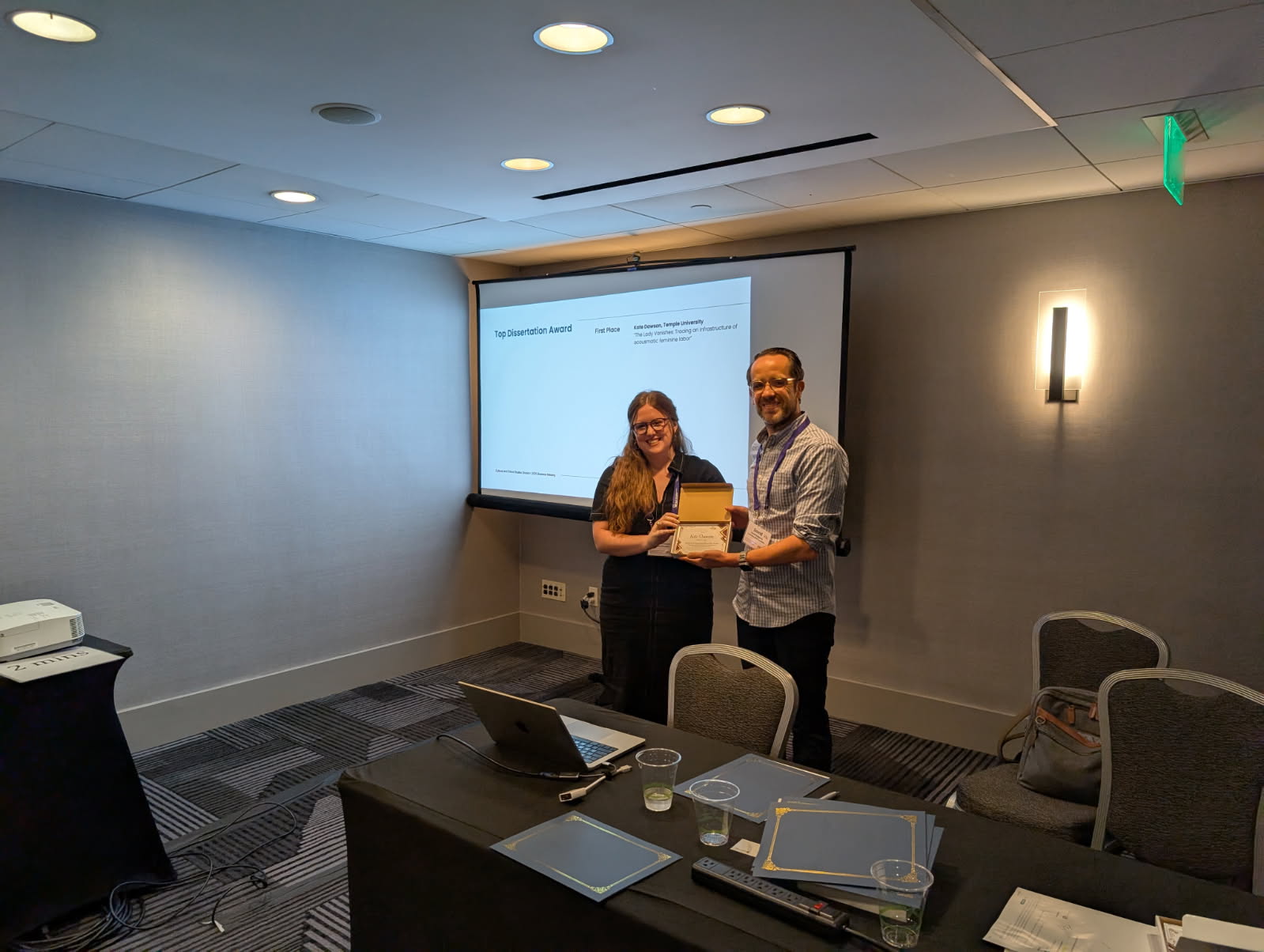Media and Communication (M&C) doctoral alum Kate Dawson, KLN ’17 ’24, was surprised yet excited when she heard from the Association for Education in Journalism and Mass Communication (AEJMC) that her work had won the Cultural and Critical Studies Division’s Dissertation of the Year Award. Just a month before the association’s annual conference, Dawson had driven to her mother’s house for a short visit and felt excited to share the news with her family.
“The surprise merely added to my delight,” she said. “It felt incredibly validating to know that others had read my work and recognized its quality and potential significance, and it was great to be able to share that news with family right away.”
Dawson’s award-winning project, "The Lady Vanishes: Tracing an Infrastructure of Acousmatic Feminine Labor”, examines the historical evolution of women's unseen voices—from early phone operators to contemporary AI voice assistants—in U.S. media systems. Working with the artifacts at the AT&T Archive and History Center in Warren, NJ, she examined popular and official discourses on the role of women's voices in telecommunications labor to trace their cultural history across key historical moments.
“She began with a broader set of questions about how women's voices are regulated, talked about and judged in society as well as in media,” said Professor Carolyn Kitch, who chaired Dawson’s dissertation committee. “Then, in her dissertation, she was able to tell a story that spans more than a century and draws on evidence from early-twentieth-century magazine advice to popular film characters to current debates about AI fembots.”
While Dawson’s interest in sound media and the gendered voice began in her master’s program, but her interest in interrogating the connections between AT&T’s all-women operating service and contemporary AI assistants solidified in Professor Brian Creech’s MMC 9207: Critical Textual Analysis course when she realized that Susan Leigh Star’s multi-dimensional theory of infrastructure might apply to her analysis of midcentury Bell Telephone advertising.
Professor David Mindich’s MMC 9208: Historical Methods for Media and Communication Research was also instrumental in helping Dawson recognize that her “previous research on ‘voice culture’ and new research on gendered, acousmatic media technology may actually be part of the same puzzle.” The discourse analysis of progressive-era women’s periodicals she produced in that class helped her see why a certain kind of feminine voice was adopted and adapted to operator service and how the assumptions and ideas undergirding this gendered media system flowed into progressively automated voice service systems over time.
In addition to being an alum of Klein’s Media and Communication doctoral program, Dawson received her bachelor’s degree in communication studies from Klein. She then pursued a master’s degree in English from Oregon State University.
“Even as I studied within an English department, I was more interested in film, performance and popular culture and felt myself guided by the comm theory instincts I had learned during my bachelor’s,” she said. “It made sense then to come back to Temple’s incredible media and communication department, and to the city of Philadelphia, which I love and dearly missed while studying on the West Coast.”
Kitch describes Dawson’s work as “a wonderful example of interdisciplinary research and a creative approach to communication scholarship.” Kitch said she is sure it will develop into an important book.
“Kate's superpower is her ability to take what seem like different phenomena and craft them into a whole story that makes sense,” she said. “It was a real pleasure to read her dissertation as it came into being.”
It is the third time the award has gone to a media and communication doctoral alum from Klein. Shannon Rooney, KLN ’13 ’20, won the award in 2022, and Wesley Stevens, KLN ’22, received it in 2023.

